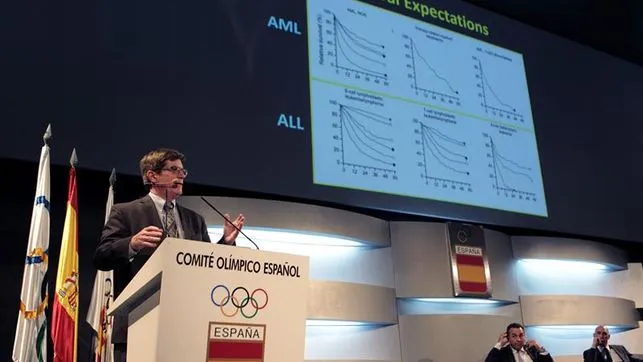Umbilical cord blood, specifically deregulatory cells that modulate the immune system, can treat in the future numerous autoimmune diseases, such as type 1 diabetes, multiple sclerosis, rheumatoid arthritis or lupus.
Dr. John Wagner, director of the Pediatric Blood and Morder Bone Mords program at the University of Minnesota, has offered a press conference in which the expectations of umbilical cord blood to stop some diseases have detailed.
Wagner, member of the Vidacord Bioethics and Cientific Committee-the first private umbilical cord blood authorized in Spain that celebrates its tenth anniversary-has focused its research on these cells that can only be collected during childbirth.
However, researchers are exploring different techniques to reproduce the cells collected at that time to get their use unlimited.
In its extensive curriculum is already a pioneer in the healing of the bullast epidermolysis with umbilical cord trunk cells, in what became the first demonstration that cell therapy can serve for more indications than in leukemia, where there is more experience.
Now, it is focused on these deregulatory cells, which as it has indicated are the "controlling teachers" of the immune system.
They are numerous in the blood of the cord because during pregnancy the mother and the baby have a large number of them so that "there is no rejection between them, so that the woman is able to maintain that foreign body inside her uterus."
However, they are scarce in the bone marrow, hence the investigations are located in the umbilical cord blood, which you can keep in private banks to be able to treat in the future a evil ailment that the child can suffer.
But also, as they have evidenced the two essays that it has already completed, to deal with more common diseases, such as falciform anemia or other autoimmune, so there are more possibilities of being able to use those cells in the future.
The reason why it had not been advanced in this regard is for the adverse effects, which are high.
When a person has leukemia the risk of a transplant is worth it, however when a patient had an autoimmune disease it was not considered.
"Only now, today, that the transplant is so safe, you can begin to be considered as a treatment alternative. And that is the future," said Wagner, who already performed in 1990 the first transplant with umbilical cord blood forCure a leukemia and in 2013 to cure HIV.
Therefore, Wagner encourages the blood of the umbilical cord, but also to make marrow donations that allow everyone to help, so applaud actions to know that of the late Pablo Ráez, the young man who managed to turn his fight against the fight against the fight against theleukemia.


